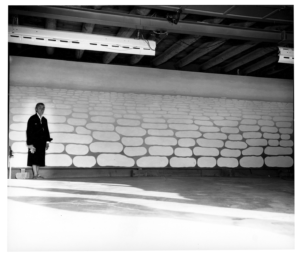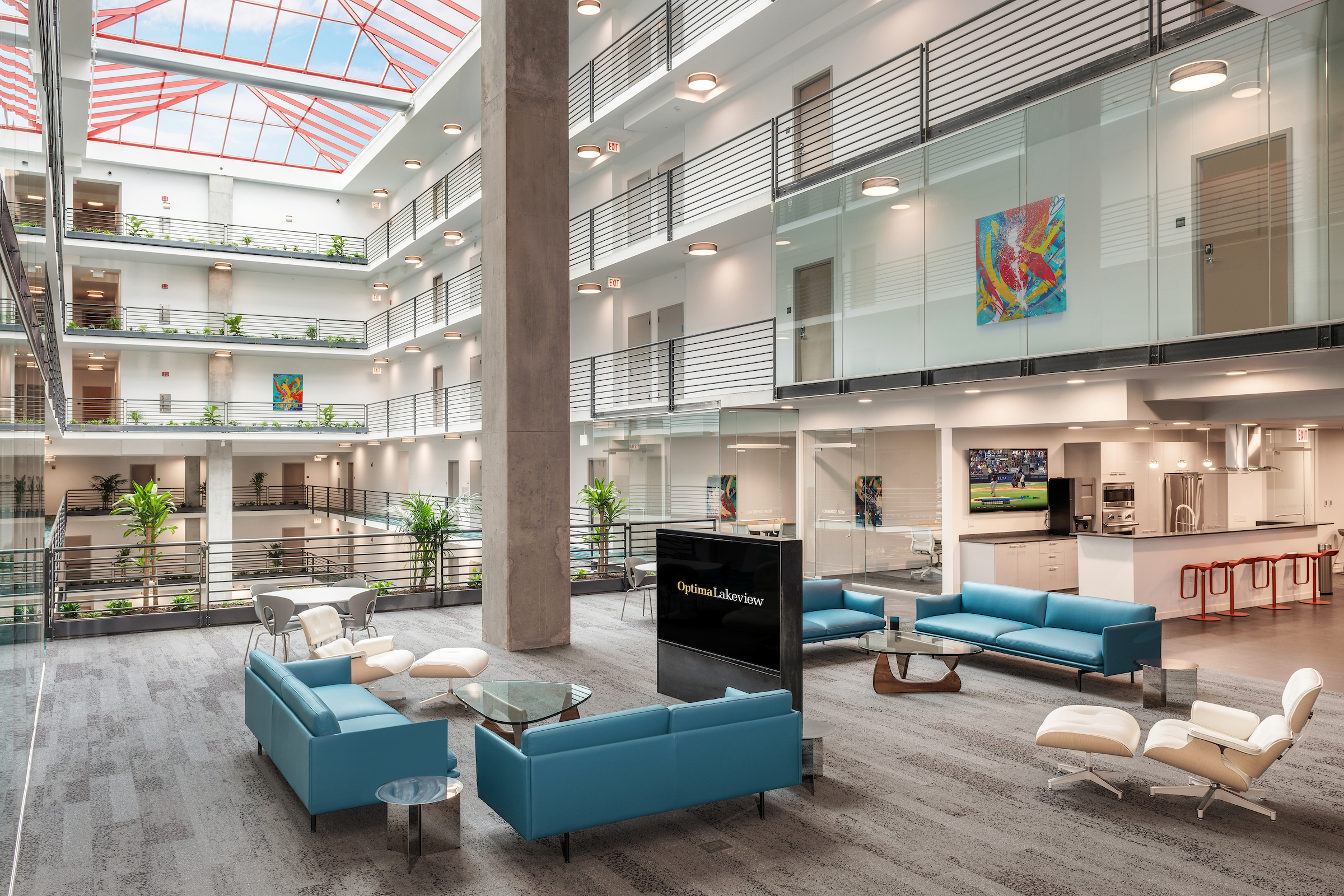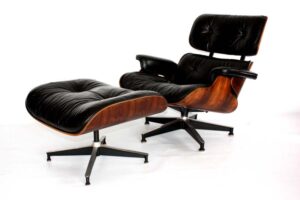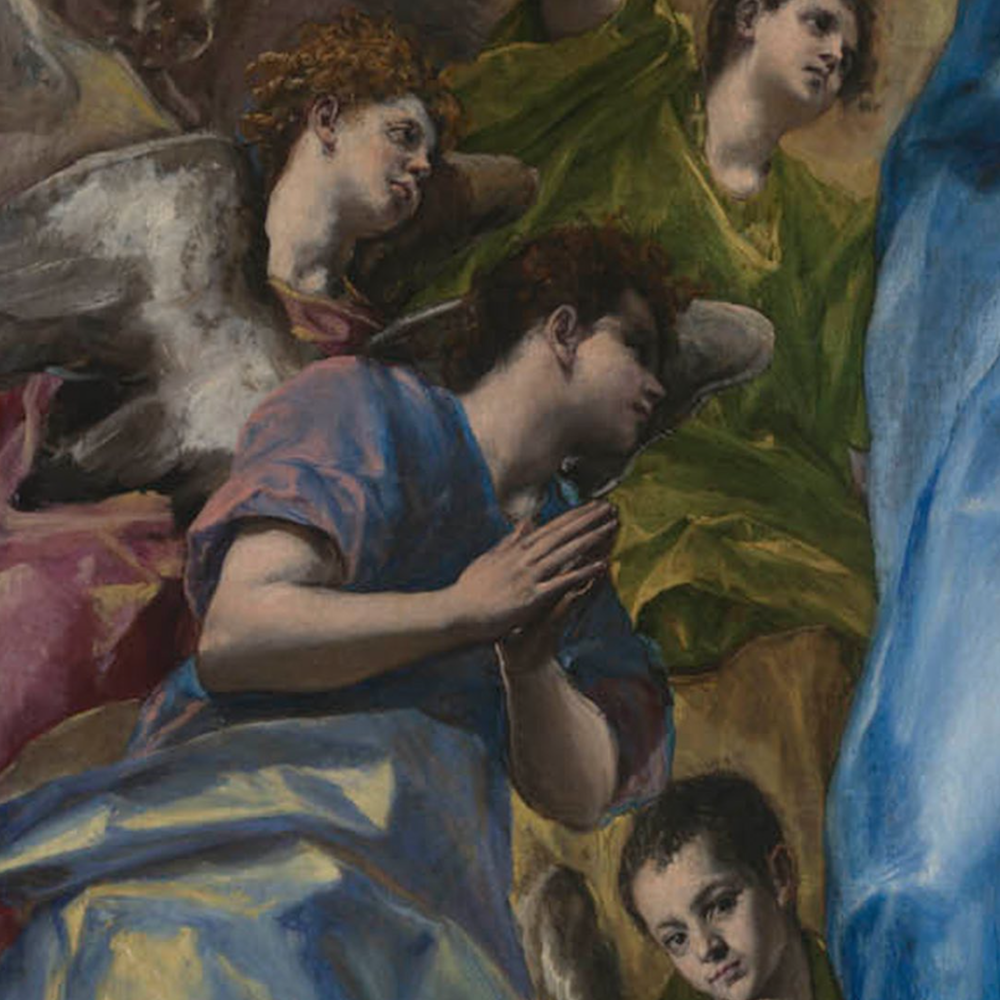Sometime in 1965, on a hot summer day at her Ghost Ranch house in New Mexico, Georgia O’Keeffe would find the motivation to complete her most grandiose painting yet, Sky Above the Clouds IV. Little did we at Optima® know, however, that the luminary architect and industrial designer, Eero Saarinen, alongside legendary agricultural corporation, John Deere, would play a pivotal role in the creation of this monumental painting.
Tracing back to June 4th, 1964 is when the story behind Clouds IV gets interesting. O’Keeffe attended the opening of the new headquarters of Deere in Moline, Illinois. Designed by the office of Eero Saarinen, the structure’s pre-rusted Cor-Ten steel exterior tested the limits of 1960s corporate architecture, veering towards an industrial aesthetic quite unique from Saarinen’s usual swooping curves, as seen with the Gateway Arch in St. Louis.
Picture the opening ceremony — a lavish and extravagant affair, showcasing top-of-the-line farm machinery, along with an evening river cruise — with politicians, corporate czars and design stars in attendance. So why was Georgia O’Keeffe, “The Mother of American Modernism” there to begin with? Well, archival photos show that she was mingling with this elite crowd against a backdrop of John Deere tractors. In just about every photo she is seen with her close friend and fellow New Mexican, designer Girard Alexander. Girard had invited O’Keeffe for two reasons. He wanted to showcase his 180-foot-long collage installation documenting the culture and development of John Deere. More importantly, however, was his belief that an O’Keeffe painting would further transform the interior of their cutting edge new headquarters.
Upon her return to New Mexico. O’Keeffe executed a detailed sketch depicting the uniform cumulus clouds that she thought of whenever flying from one destination to another — hence, Sky Above the Clouds I-IV. Where would an O’Keeffe painting go in a building whose every element had been designed and polished to near perfection?
From its pre-rusted steel exterior, down to the last coat rack and door handle. Girard knew of such a place: the executive dining room. This room was equipped with tantalizing Siamese silk ceiling panels that hung perpendicular to its sublime Portuguese white marble walls. The architectural effect was, by all intents and purposes, cloud-like. Sky Above the Clouds IV would have only elevated this effect, Girard thought, but the Deere team didn’t see it that way, unfortunately, and the commission was axed.

She was in the midst of a busy year. Full of other work, international travel, and even a harrowing knee injury that she was recovering from. Fortunately for us, O’Keeffe persisted in her desire to see Clouds IV to the end. She completed the work, at the age of 77, in the summer of 1965.
In 1970, Sky above Clouds IV was scheduled to be included in a retrospective of O’Keeffe’s work at the Whitney Museum of American Art, New York, the Art Institute of Chicago and the San Francisco Museum of Art. After being shown in New York and Chicago, the painting remained on loan to the Art Institute because it was too large to pass through the doors at the museum in San Francisco. Ten years later, due to the diligence of O’Keeffe and local patrons, the painting joined the museum’s permanent collection. Today, this 8-foot by 24-foot masterpiece hangs above one of the Art Institute’s grand staircases for all to see.





